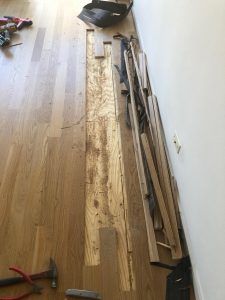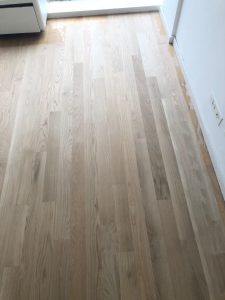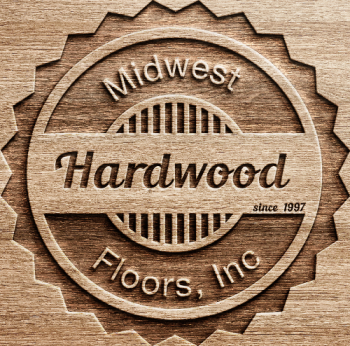
 Repairing, refinishing, or resurfacing wood floors can make any room in your home beautiful again. The trick is knowing when you can refinish, and when you should refurbish your floors. Many older Chicago homes have original hardwood floors that have probably seen better days. As the hardwood gets older over the years, the color fades and dulls. Dents and scratches may scar the surface of the wood due to wear and tear.
Repairing, refinishing, or resurfacing wood floors can make any room in your home beautiful again. The trick is knowing when you can refinish, and when you should refurbish your floors. Many older Chicago homes have original hardwood floors that have probably seen better days. As the hardwood gets older over the years, the color fades and dulls. Dents and scratches may scar the surface of the wood due to wear and tear.
The solution is to repair the damaged boards, and then either refinish the wood or resurface the wood. Learn more about both options so that you can make the right decision for your needs.
Refinishing and Resurfacing: What’s the Difference?
Resurfacing and refinishing are terms that are sometimes used interchangeably, but they have different meanings.
- Refinishing involves sanding the top layer of the floor and applying a fresh coat of stain and finish. It’s a relatively simple project — all you need to get the job done is a sander for floors, stain, and finish to make the floor look new again.
- Resurfacing your floor needs more than just a layer of polish on top. It may require replacing old floorboards, grinding down uneven boards, and reinforcing wood planks with new nails. This process is more time-consuming — it requires experience, wood-grinding equipment, lumber, a nail gun, power saw, and other specialized tools.
To Resurface Hardwood Flooring or Refinish?
You can refinish your floors if the damage is superficial scratches and discoloration. If the planks are reasonably even and smooth, all it needs is a light sanding and few new coats of stain and finish. Here are a few signs that your floor may need resurfacing:
- The floorboards are noticeably warped or bent.
- The planks are water-damaged or rotted.
- When sanded, some or all of the planks still have an unattractive or uneven color.
- Parts of the wooden planks are missing or cracked.
- There are holes in some pieces of wood.
- Nails are missing from the floorboards.
Floors that need resurfacing will not look good if you just put a coat of stain and finish on top. Another alternative to resurfacing is to put hardwood laminate flooring on top of the existing wood planks, which is another do-it-yourself project.
The condition and age of your hardwood flooring has an impact on the overall look of your home. Use these tips to decide if refinishing or resurfacing wood floors is the solution that will help restore your Chicago home to its original beauty.

